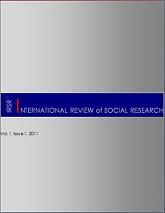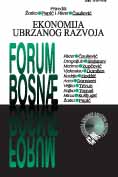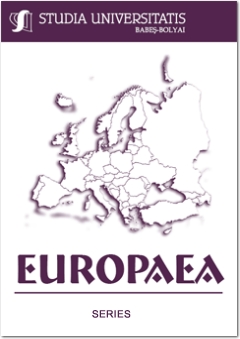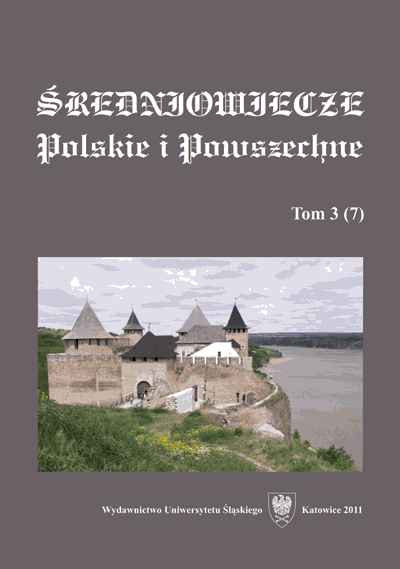
Keywords: Gender; sexual behaviours; adolescents; ‘serious girl’; ‘prostitute’; France
The sexual representations and the sexual experiences of individuals are marked by the gender they belong to, which induces social roles and differentiated ideals and determines behaviours, namely those that concern the body and sexuality. The speeches of young people questioned in an ethnological investigation on sexual representations in the Eastern suburb of Paris, denounce the opposition between feminine and masculine values, and show the difference between the representations and behaviours of young males and females. The speeches of young people denote a distinction between the ‘serious girl’, the prostitute and the ‘whore’, which marks a hierarchy of moral values, in relation to their behaviour in general and to their sexual behaviour in particular.
More...
Keywords: architecture firm; firm networks; social capital; economic capital; bussiness
I will discuss in this article the dynamics of business groups, using the case of architects from three Transylvanian cities (Cluj-Napoca, Timisoara and Brasov with emphasis on Cluj-Napoca). The architecture companies successfully represent the current trends of company organization in dynamic contexts, generated by the market changes, where services become the most important products of large cities. Using a sample of 375 architectural companies from these cities that employ 616 persons, I outline a field model inspired by Bourdieu’s work. My argument is that the large number of actors in the architectural networks from Cluj-Napoca is explained by the different forms of educational, economic, social and politic capital mobilized to create competitive companies and to survive within an instable post-socialist economic environment. Moreover, the internal structure of network organization from Cluj-Napoca is based on the usage of different types of available capital.
More...
Keywords: healthcare; migration; infectious diseases; access; Europe
The investigation of migration can help us understand how the types of migration interact with each other as well as with the various local/national ‘immobilities’. Migrants pose special challenges to healthcare systems, in their origin as well as destination countries. Available data on this topic, following EU interests and policies, focuses on health problems of vulnerable migrant groups, often directed exclusively to issues that can affect the local population. This paper aims to set some explanatory contexts when it
More...
Keywords: regional disparities; social development; development regions; community capital; social development areas
This article analyzes the current state of regional disparities in Romania and their dynamics. An index of social development (IDSL) is proposed and computed for each of the communes and cities of the country. The concept basis of that index is given by the notion of community capital with its human, material and vital components. The configuration of social regional disparities results by aggregating IDSL values by counties, communes of the same county, cities of the same county, historical regions and development regions. Regional disparities are analysed, on the one hand, by aggregated values of that index and, on the other hand, by considering the dynamics of GDP per inhabitant, infant mortality rate and life expectancy at birth. The key axes of regional disparities in Romania are related to rural-urban residence, population density, accessibility to service and employment centres, agricultural vs. non-agricultural employment, and network capital of the population. Policy implications of the analysis are introduced by a discussion section at the end of the paper.
More...
Keywords: Spain; Romanian immigration; geographical distribution; insertion on the labor market; fields of activity
The Romanian population is the most important foreign population in Spain. Romanian migrants are characterized by their large number (about 800.000 residents and 268.000 contract workers) and their rapid growth. The economic and labour motivation for migration determines their geographical distribution, with high numbers of Romanian migrants in cities and in areas of agricultural, industrial and tourist industries. However, a high proportion of Romanian migrants also live in small towns and rural areas. Most of them were already illegal migrants when Romania entered the EU and they became EU citizens. From January 1st 2009, these once illegal migrants now have full freedom of employment in Spain. They adapt to circumstances of each period of time, in order to enter or to remain in the Spanish labour market. Most work in construction and agriculture as well as domestic services, trade, tourism and industries. The current economic crisis and the resulting unemployment have raised the issue of return migration to Romania.Keywords: Spain, Romanian immigration, geographical distribution,
More...



Keywords: mistakes; dogmas; politics; religion; economy
Thirteen years after signing of the Dayton Peace Agreement and contrary to the outspread expectations of international community and Bosnia-Herzegovinian politicians and citizens, Bosnia and Herzegovina is still unsustainable as a state. Poverty is the impending phenomenon in Bosnia and Herzegovina in the same degree as Bosnia and Herzegovina’s surviving is uncertain. At the beginning of the process of transition in 1992, Bosnia and Herzegovina opened the door of the political labyrinth, and since the Dayton Agreement was signed in 1995, Bosnia and Herzegovina opened two doors: a door of economic and a door of religious labyrinth. These days in year 2008, Bosnia and Herzegovina is lost in the labyrinth without even dim indicators on the horizon of the way of exiting it. Such “unexpected” state of Bosnia-Herzegovinian society is the function of mistakes made by domestic and international political and economic decision-makers, and which are based on unsophisticated interpretations of democracy towards which Bosnia and Herzegovina has headed since the beginning of 1990s. In this article, we will try to consider shortly all three sub-labyrinths as well as lessons which (could) help as starting point for finding way out of the labyrinth.
More...



Depuis Artistote, l’étude comparative des systèmes et des régimes politiques a toujours préoccupé une bonne partie des chercheurs en sciences sociales. Des critères divers de comparaison ont été proposés, à commencer par le nombre de dirigeants (monarchies ou polyarchies), le type de relation entre les composants du pouvoir (concentration ou séparation des pouvoirs), la manière dont les dirigeants se rapportent au peuple (représentation ou participation directe), etc. Plus récemment, la démarche comparative se rapporte de plus en plus aux conditions empiriques, dans un effort de tester, de valider et de raffiner les classifications théoriques en fonction des évolutions constatées.
More...
Keywords: labour migration; migration networks; migrant strategies.
For the last decade, the Romanian circulatory labour migration became a widespread phenomenon. Italy and Spain represent the first destination countries for Romanians seeking better job and life opportunities, in their attempt to overcome the difficulties back home. The present article focuses on the dynamics of the phenomenon in the two mentioned destinations, with a special focus on Italy, where the Romanian migrants register the highest number among migrant population (according to ISTAT Caritas Italia data). We also added some insights on several migration experiences, based on a micro study carried out in May, 2010.
More...
Keywords: identity; EU accession; public opinion.
The 2004 enlargement meant the formal inclusion of 65 million citizens into the European Union. To what extent to they perceive themselves as Europeans and how did the identity attitudes transformed after the accession? To answer these questions this article focuses on eight new member states and uses individual level data from the 2002-2006 Candidate Countries and Standard Eurobarometers. The results are counterintuitive and show that accession acts as a catalyst for the national identity. The European identity loses ground starting with the accession year (and follows an irreversible trend), whereas the national identity grows stronger.
More...
Keywords: de-Stalinization; social tensions; foreign policy; ‘socialist camp’; Soviet reactions.
For the Soviet Union, the Hungarian revolution from the fall of 1956 represented probably the most important challenge it had to face since the Nazi invasion during the Second World War. The “popular democracies” were also threatened by it to a great extent; even independent Yugoslavia, a true model for the Magyar insurgents, agreed with Khrushchev’s plan of sending Soviet troops to Budapest and forcefully reinstating communism in Hungary. This study approaches the Hungarian crisis as a consequence of the Soviet ideological metamorphosis that led from what I called post-revolutionary Leninism to Europeanized Leninism. Afterwards, Hungarian and the Suez crises are briefly compared from an international relations’ systemic perspective.
More...
Keywords: communist propaganda; Youth Festival; old order; new order; event and meaning.
My paper brings forth an event that took place in Romania in 1953, a youth festival that functioned as communist propaganda . I am trying to decode the mass media perception of the staged event, which occurred few months after Stalin’s death. The festival was an event of a great magnitude, concentrating many efforts and was perceived as an applied ideology. It started with the Communist Youth Third Congress (24th – 30th of July 1953) followed by the Global Youth Festival (the first 2 weeks of August 1953). For this review, I consulted particularly two newspapers from that period in order to observe the way the festival was both built as an event and reflected as an event. The stereotypes encountered during the festival as religious counterfeit, strategies for mass-control on the one hand, and stereotypes regarding the foreigners’ perception of this time and space on the other hand, opened new territories as the paper unfolded.
More...